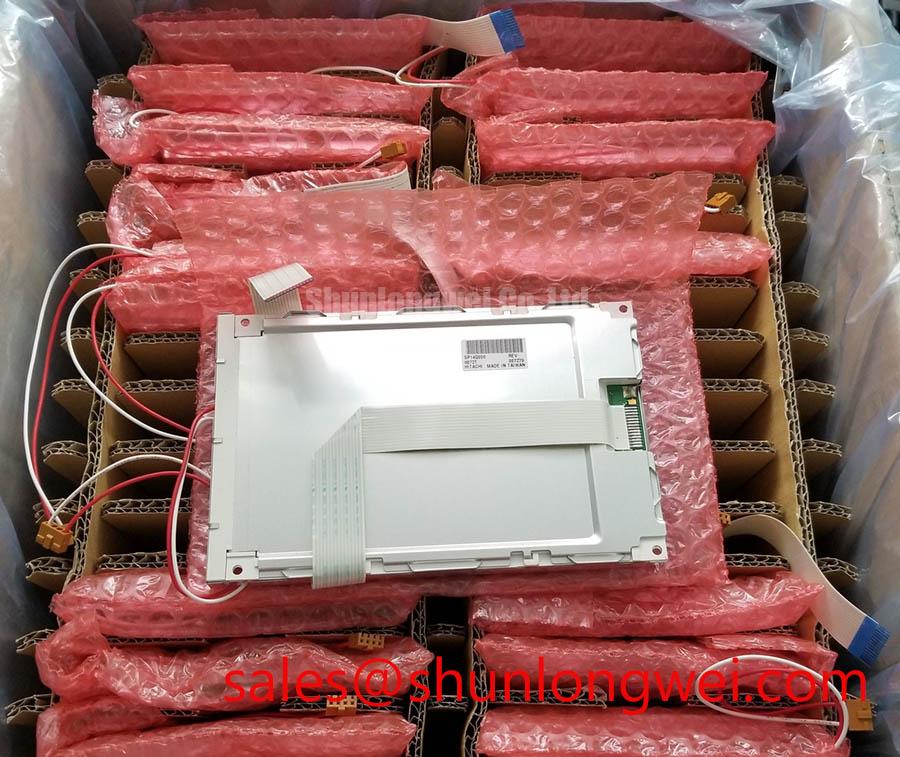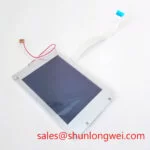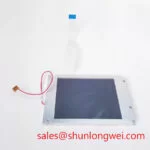SP14Q006 | 5.7" QVGA Display for Industrial Reliability
Introduction to the SP14Q006 FSTN-LCD Module
Imagine a CNC machine control panel on a busy factory floor, subjected to constant vibrations and fluctuating temperatures. The operator needs an unquestionably clear, immediate readout of critical coordinates and system status. The Hitachi SP14Q006 delivers this exceptional operational longevity and data clarity, engineered for industrial HMIs where mechanical resilience is paramount. This display provides a focused, high-visibility interface built for endurance. What is the screen resolution of the SP14Q006? It features a Quarter VGA (QVGA) resolution of 320 x 240 pixels, ideal for presenting essential data without complexity.
Proven Deployments in High-Stress Environments
The true measure of an industrial component is its performance in the field. The Hitachi SP14Q006 has a long history of successful integration into equipment that operates far from ideal conditions. Its design principles are validated in applications such as:
- Portable Test and Measurement Devices: Where devices are frequently moved, handled, and subjected to accidental impacts, the module's shock and vibration resistance ensures data integrity and a long service life.
- Industrial Automation Controllers: Mounted directly onto machinery, it withstands the persistent vibrations of motors, presses, and assembly lines, providing a stable human-machine interface.
- Medical Instrumentation: In devices like patient monitors or diagnostic equipment, its dependable, high-contrast display provides unambiguous readouts essential for healthcare professionals.
Engineering for Unwavering Performance
The architecture of the SP14Q006 is centered on delivering consistent performance over an extended operational life. This is achieved through a focus on key structural and display technologies. The Film-compensated Super-twisted Nematic (FSTN) passive-matrix technology provides excellent black-and-white contrast, which is crucial for quick and accurate data interpretation. How does the SP14Q006 ensure readability? Through its high-contrast FSTN panel combined with an integrated Cold Cathode Fluorescent Lamp (CCFL) backlight, it maintains clarity across various ambient lighting conditions. The module's mechanical frame and internal construction are specifically designed to dampen external forces, safeguarding the delicate liquid crystal element and its connections.
Data-Informed Selection: SP14Q006 in Context
When evaluating displays, engineers must weigh various technologies against application requirements. The table below provides a factual comparison to support your decision-making process, positioning the SP14Q006 against other common display types. This data highlights the specific scenarios where a robust monochrome display offers a distinct advantage. For systems requiring a similar form factor but with color capabilities, the KCG057QV1DB-G000 presents a color STN option for consideration.
| Feature | Hitachi SP14Q006 (FSTN Monochrome) | Typical Color TFT Module |
|---|---|---|
| Power Consumption | Lower | Higher |
| Sunlight Readability (Reflective) | Generally Superior | Requires High Brightness / Optical Bonding |
| Data Interface Complexity | Simpler (4-bit parallel) | More Complex (e.g., LVDS, RGB) |
| Vibration/Shock Spec | Explicitly rated for industrial use | Varies; often lower than specialized industrial models |
SP14Q006 Technical Specifications at a Glance
The following parameters are derived from the official product datasheet. For complete engineering details, please download the full specification sheet.
Display Characteristics
- Display Type: FSTN (Film-compensated Super-twisted Nematic) LCD
- Screen Size: 5.7 inches (14.4 cm) diagonal
- Resolution: 320 x 240 pixels (QVGA)
- Display Mode: Transflective, Black/White (Monochrome)
- Typical Contrast Ratio: 18:1
- Backlight: 1x CCFL with Inverter
Environmental Ratings
- Operating Temperature Range: -5°C to +60°C
- Storage Temperature Range: -20°C to +60°C
- Shock Resistance: 50G (490 m/s²)
The Strategic Value of Durability in Modern Systems
In an era of rapid technological advancement, the decision to specify a component like the SP14Q006 is a strategic one focused on Total Cost of Ownership (TCO). While modern color displays offer rich user experiences, monochrome FSTN displays provide an unparalleled level of reliability and efficiency for specific tasks. Their lower power draw simplifies thermal management and can extend battery life in portable applications. Furthermore, their proven durability reduces field failures, service calls, and the associated maintenance costs, making them a sound long-term investment. This philosophy is explored further in our guide on Industrial vs. Consumer Displays.
Optimized Use Cases: From CNC Controls to Medical Devices
The specific feature set of the Hitachi SP14Q006 makes it an optimal solution for systems where clarity, reliability, and low power consumption are the primary design drivers. Its straightforward parallel interface simplifies integration with a wide range of microcontrollers, reducing development time and firmware complexity. The display excels in environments where operators need to glean critical information at a glance, without the distraction of a complex color GUI. For portable test instruments requiring maximum battery life and unambiguous data display under varied lighting, the SP14Q006's low-power FSTN architecture is a superior choice over power-intensive TFTs.
As you evaluate display options for your system, consider the demanding conditions it will face. Understanding the engineering behind components built for these challenges is key. For more insights, explore our resources on engineering for extreme environments.
Frequently Asked Questions about the SP14Q006
1. Why would an engineer select the monochrome FSTN SP14Q006 instead of a full-color TFT display for a new design?
An engineer would choose the SP14Q006 for applications prioritizing ruggedness, low power consumption, and direct sunlight readability over a rich color interface. Its simpler drive electronics and proven resilience in high-vibration environments make it a more reliable and cost-effective choice for many industrial, medical, and test equipment HMIs where presenting essential data clearly is the main objective.
2. How does the specified vibration resistance of the SP14Q006 translate to real-world industrial applications?
The specified resistance (e.g., 50G shock) means the module is engineered to reliably operate when mounted directly on equipment like stamping presses, weaving looms, or mobile machinery. Unlike consumer-grade displays that might suffer from connection fatigue or screen artifacts under constant shaking, the SP14Q006 is built to maintain both its physical integrity and display performance, preventing costly downtime.
3. What is the typical lifetime of the SP14Q006's CCFL backlight and is it replaceable?
The CCFL backlight is typically rated for a lifetime of around 50,000 hours to half-brightness. While the CCFL tube itself is an integral component, the entire backlight assembly, including the tube and reflector, is designed to be a replaceable unit in many industrial displays. This allows for scheduled maintenance to extend the usable life of the HMI unit significantly.
For further technical inquiries or to request a quote, please contact our technical sales team for detailed information on the SP14Q006 LCD module.













